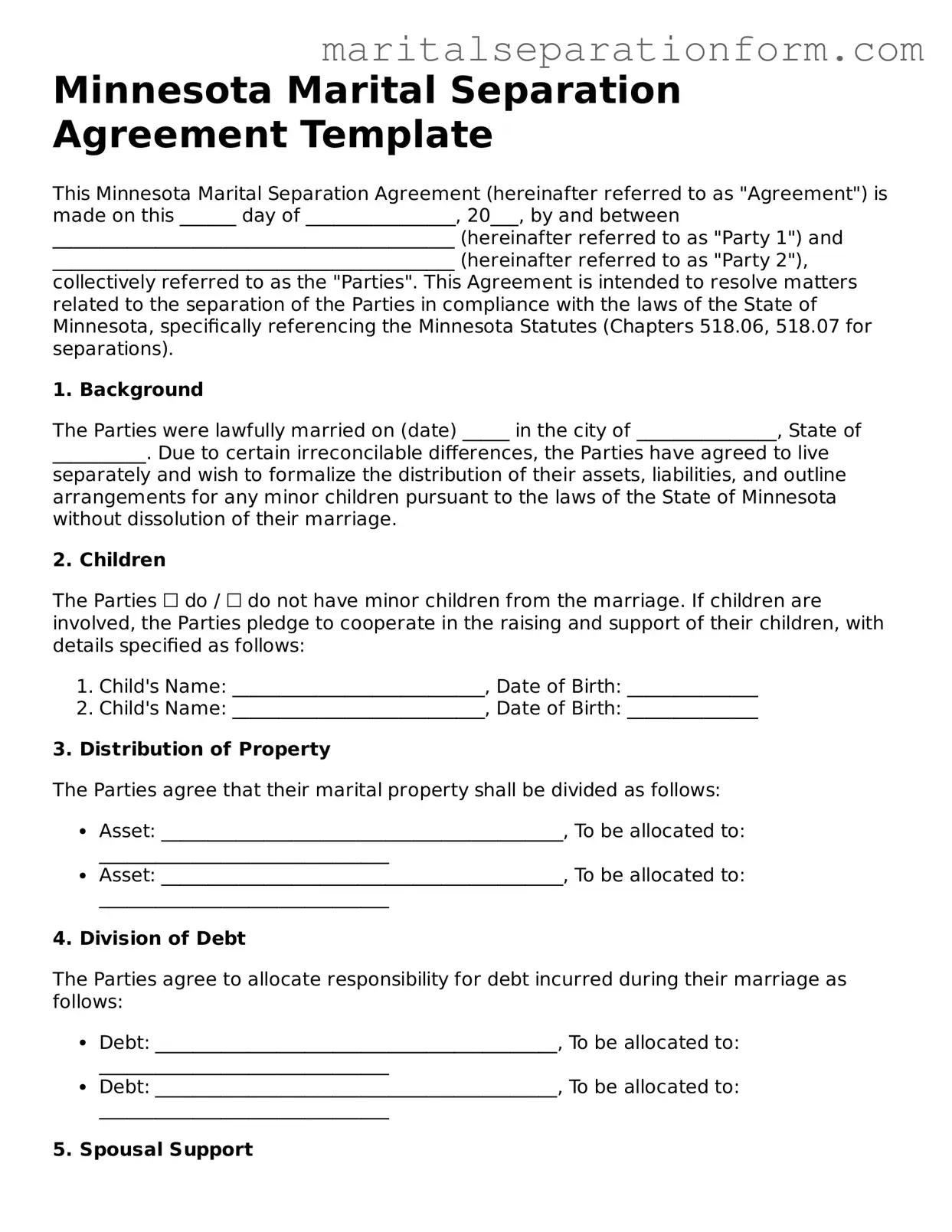Minnesota Marital Separation Agreement Template
This Minnesota Marital Separation Agreement (hereinafter referred to as "Agreement") is made on this ______ day of ________________, 20___, by and between ___________________________________________ (hereinafter referred to as "Party 1") and ___________________________________________ (hereinafter referred to as "Party 2"), collectively referred to as the "Parties". This Agreement is intended to resolve matters related to the separation of the Parties in compliance with the laws of the State of Minnesota, specifically referencing the Minnesota Statutes (Chapters 518.06, 518.07 for separations).
1. Background
The Parties were lawfully married on (date) _____ in the city of _______________, State of __________. Due to certain irreconcilable differences, the Parties have agreed to live separately and wish to formalize the distribution of their assets, liabilities, and outline arrangements for any minor children pursuant to the laws of the State of Minnesota without dissolution of their marriage.
2. Children
The Parties ☐ do / ☐ do not have minor children from the marriage. If children are involved, the Parties pledge to cooperate in the raising and support of their children, with details specified as follows:
- Child's Name: ___________________________, Date of Birth: ______________
- Child's Name: ___________________________, Date of Birth: ______________
3. Distribution of Property
The Parties agree that their marital property shall be divided as follows:
- Asset: ___________________________________________, To be allocated to: _______________________________
- Asset: ___________________________________________, To be allocated to: _______________________________
4. Division of Debt
The Parties agree to allocate responsibility for debt incurred during their marriage as follows:
- Debt: ___________________________________________, To be allocated to: _______________________________
- Debt: ___________________________________________, To be allocated to: _______________________________
5. Spousal Support
The Parties ☐ do / ☐ do not agree on a spousal support arrangement. If spousal support is agreed upon, details of the agreement are outlined as follows:
- The amount of support: _______________________________ per month
- The duration of payments: _____________________________
- Other conditions: _______________________________________
6. Additional Provisions
Any additional provisions agreed upon by the Parties may be outlined as follows:
- _________________________________________________________________________
- _________________________________________________________________________
7. Entire Agreement
This Agreement contains the entire agreement between the Parties relating to the subject matter hereof and supersedes any and all prior agreements or understandings, written or oral, between the Parties related to the subject matter hereof. This Agreement can only be changed or modified through a written document signed by both Parties.
IN WITNESS WHEREOF, the Parties have executed this Agreement as of the date first above written.
Party 1 Signature: ___________________________________ Date: _____________
Party 2 Signature: ___________________________________ Date: _____________
